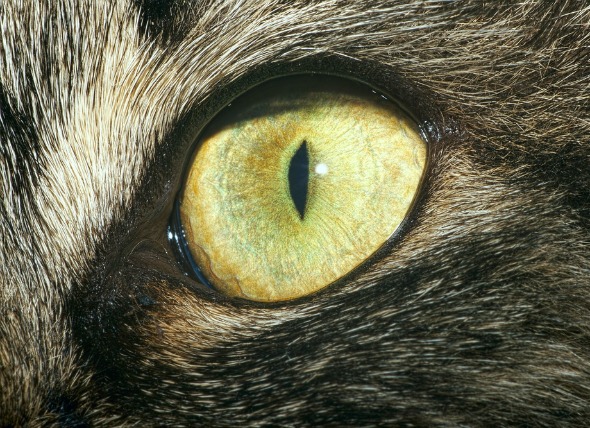

Swelling due to an excessive accumulation of tissue fluid within the interstitium -- a small place or gap in the substance of the cat's tissues or organs -- is referred to as edema. This can be localized (focal) or generalized (diffuse) in location.
Peripheral edema can occur in both dogs and cats. If you would like to learn more about how this disease affects dogs please visit this page in the PetMD health library.
Cats that develop peripheral edema will often have a history of allergies, or other immune, cardiac, or organic diseases. Exposure to toxic or infectious agents, such as poisonous spiders or ticks, and traumatic incidents such as car accidents, are also frequent in the histories of cats that have developed peripheral edema.
Overall, visible symptoms are almost impossible to detect early on in the development of this condition. A physical examination may reveal unexplained weight gain. The areas in which excess fluid may become first apparent are generally the throat or abdomen.
There is a wide range of conditions that can lead to peripheral edema. Localized or single-limb edema may result from injury, such as from a car accident, burns, obstruction in an artery (due to a blood clot), contact with toxic agents, such as a snake bite or bee sting, abnormal tissue growth (known as neoplasia) in the lymphatic tissues of the body, or high pressure in the capillary fluids.
Regional or generalized edema, which is not focused in a single area or limb, may result from infections, such as a severe bacterial infection, congestive heart failure, kidney failure, the tourniquet effect of a bandage bound too tight, or hypernatremia, a disease in which the kidneys retain excessive amounts of sodium.
Diagnosis of peripheral edema is often determined by fine-needle aspiration of an affected area, by which a fluid-sample is removed via needle for microscopic evaluation. An examination of the affected tissue samples taken by biopsy may also help determine an underlying cause for the edema. Additional diagnostic procedures may include urine analysis, chest and lung X-rays, and an electrocardiogram to measure the heart’s functionality.
Treatment will depend on the originating cause of the edema. For cats that have developed edema secondary to a bodily infection, the application of warm compresses is advised. In some cases, surgery or drainage may be necessary for treating the underlying cause. Severely edematous (swollen) limbs may require amputation if the condition cannot be resolved. Medication to treat the symptoms also depends on the underlying cause for the edema.
Monitoring after initial treatment on the cat will include complete blood counts, urine tests to check for protein concentrations in urine, and a series of biopsies of affected tissues, such as kidney tissues.
Lifestyle changes may be necessary depending on the cause of the edema. For example, a cat that has suffered from congestive heart failure should have its activity restricted during the recovery period. The prognosis for cats with peripheral edema depends on the underlying cause of the condition.
Some causes of localized edema may be prevented with general safety measures, such as protecting your cat from hazardous areas like roads, where injury may occur, and preventing access to toxic substances and poisonous animals, such as snakes and spiders.
 Corneal Ulcers in Cats
Ulcerative Keratitis in Cats
The cornea — t
Corneal Ulcers in Cats
Ulcerative Keratitis in Cats
The cornea — t
 Degeneration of the Cornea in Cats
Corneal Degenerations and Infiltrations in Cats
T
Degeneration of the Cornea in Cats
Corneal Degenerations and Infiltrations in Cats
T
 Irritable Bowel Syndrome in Cats
Chronic Irritation in the Lining of the Bowels in Cats
&
Irritable Bowel Syndrome in Cats
Chronic Irritation in the Lining of the Bowels in Cats
&
 Fatty Skin Tumors in Cats
Lipoma in Cats
Lipomas are soft masses or tumors
Fatty Skin Tumors in Cats
Lipoma in Cats
Lipomas are soft masses or tumors
 Fungal Infection (Malassezia pachydermatis) of the Skin in Cats
Malassezia Dermatitis in Cats
Malassezia pachyder
Fungal Infection (Malassezia pachydermatis) of the Skin in Cats
Malassezia Dermatitis in Cats
Malassezia pachyder
Copyright © 2005-2016 Pet Information All Rights Reserved
Contact us: www162date@outlook.com